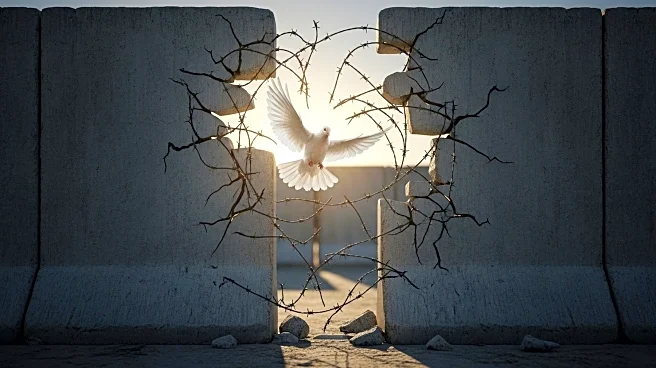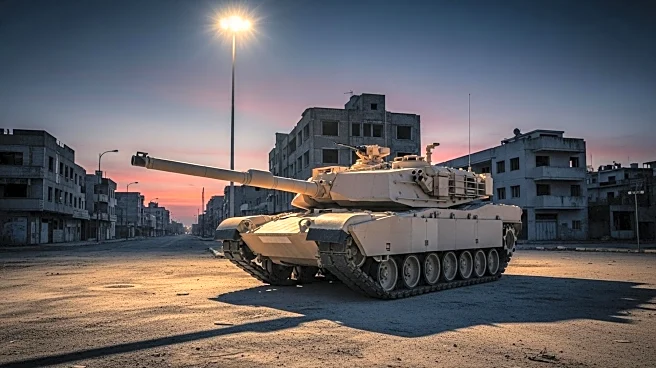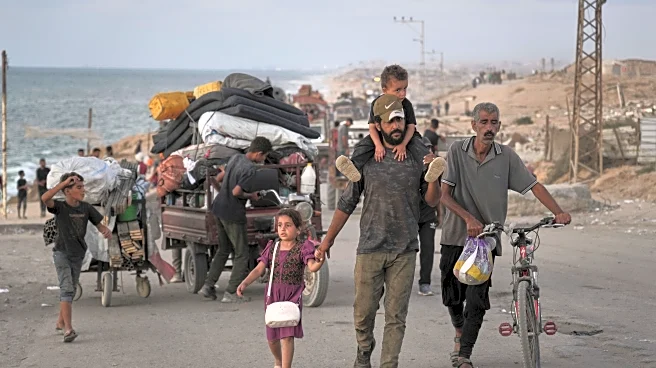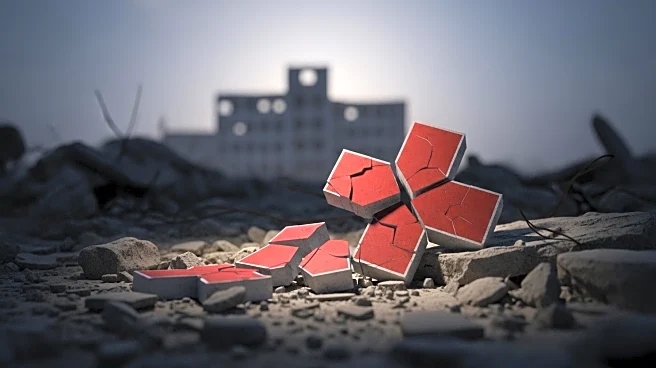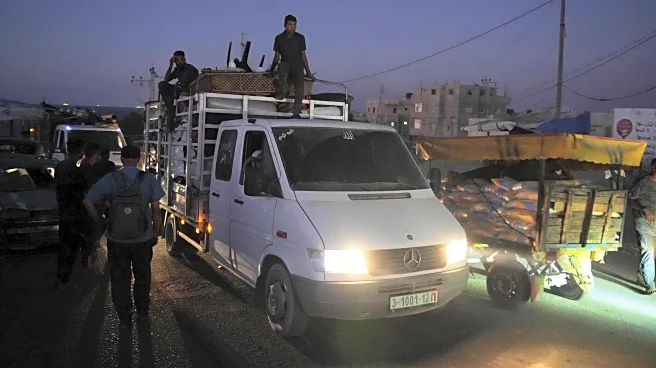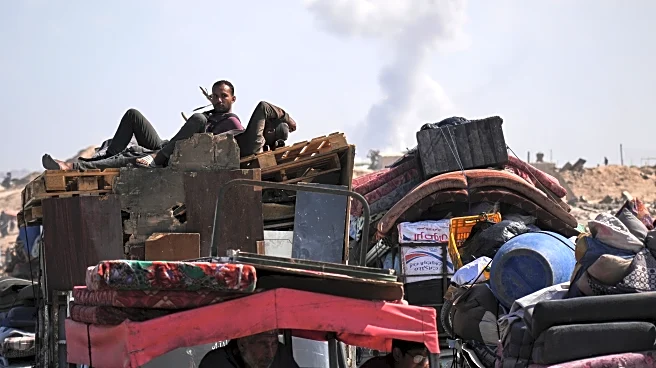What's Happening?
Displaced Palestinians in the Israeli-designated humanitarian zone in southern Gaza are experiencing worsening conditions as the area becomes increasingly crowded. Reports indicate that two children were killed in Israeli strikes on tents within the zone, raising concerns about safety. The UN has reported that over two million Palestinians are being forced into just 13% of the Gaza Strip. Aid agencies are struggling to meet the growing demand for services, with tight Israeli restrictions on what can be brought into Gaza. Some food items, such as peanut butter, are classified as luxuries and are not permitted, leaving large amounts of aid stuck outside Gaza. The Israeli military has ordered Gaza City residents to move south, promising better services, but those who have made the journey face challenges in finding food and shelter.
Why It's Important?
The humanitarian crisis in Gaza highlights the severe impact of military operations on civilian populations. The restrictions on aid and the overcrowding in designated zones exacerbate the suffering of displaced Palestinians. The situation poses significant challenges for international aid organizations attempting to provide relief. The ongoing conflict and displacement could lead to long-term health and social issues for the affected population, particularly children. The international community may face increased pressure to address the humanitarian needs and find a resolution to the conflict.
What's Next?
Aid agencies are working to reopen damaged hospitals and establish additional field hospitals in southern Gaza. The UN and other organizations may continue to negotiate with Israeli authorities to ease restrictions on aid supplies. The situation may prompt further international diplomatic efforts to address the humanitarian crisis and seek a peaceful resolution to the conflict.
Beyond the Headlines
The ethical implications of the humanitarian crisis in Gaza are profound, raising questions about the responsibilities of military forces in conflict zones. The cultural heritage of Gaza is at risk, with significant destruction of historical sites. The long-term impact on the social fabric and mental health of the displaced population could be substantial, necessitating ongoing support and intervention.

